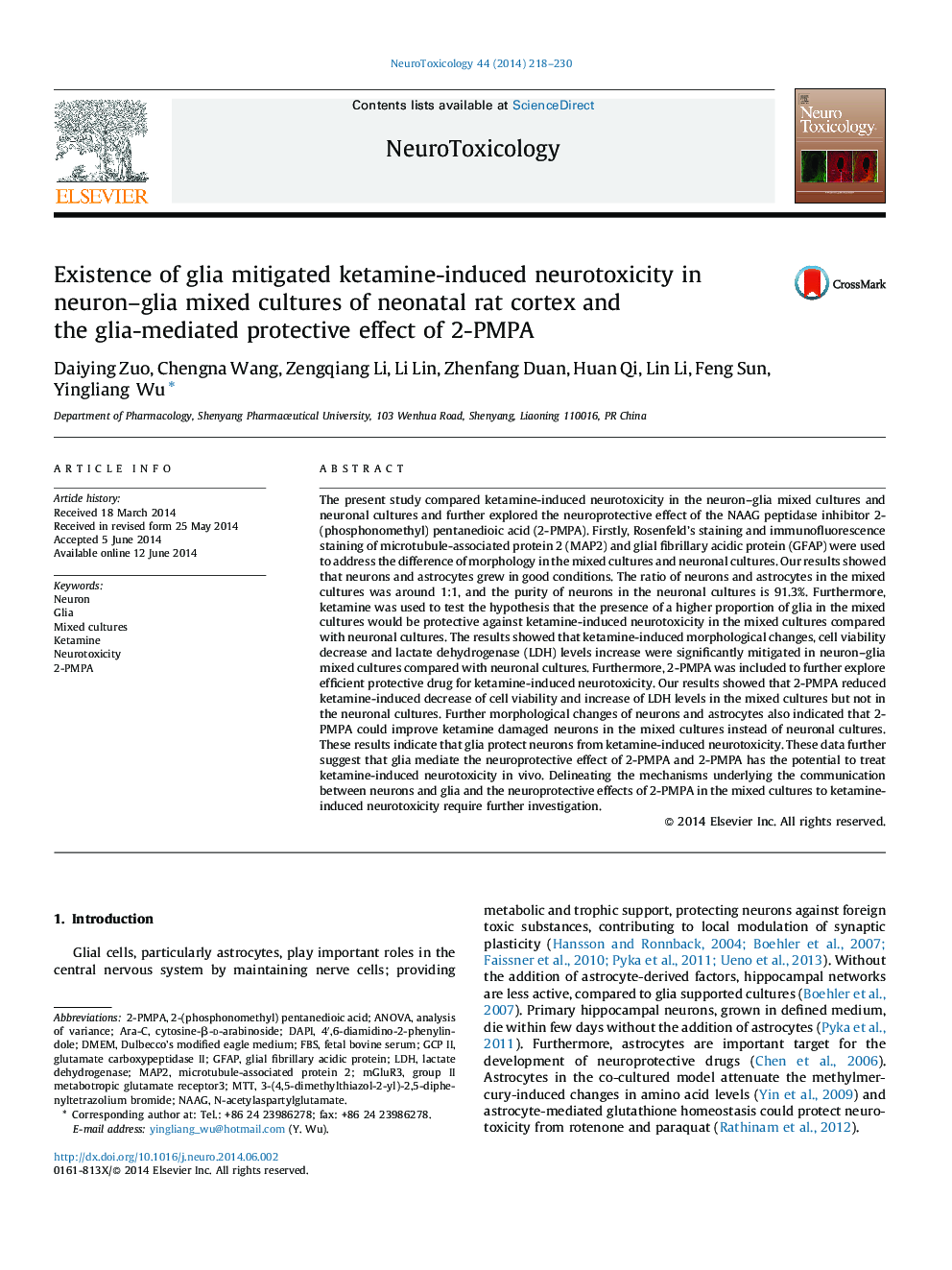| Article ID | Journal | Published Year | Pages | File Type |
|---|---|---|---|---|
| 2589676 | NeuroToxicology | 2014 | 13 Pages |
•We found that neuron–glia mixed cultures were less sensitive to ketamine-induced neurotoxicity than neuronal cultures.•Glia in neuron–glia mixed cultures mitigated ketamine-induced neurotoxicity.•2-PMPA improved ketamine-induced neurotoxicity in neuron–glia mixed cultures instead of neuronal cultures.•Glia positively participated in the protective effect of 2-PMPA against ketamine-induced neurotoxicity.
The present study compared ketamine-induced neurotoxicity in the neuron–glia mixed cultures and neuronal cultures and further explored the neuroprotective effect of the NAAG peptidase inhibitor 2-(phosphonomethyl) pentanedioic acid (2-PMPA). Firstly, Rosenfeld's staining and immunofluorescence staining of microtubule-associated protein 2 (MAP2) and glial fibrillary acidic protein (GFAP) were used to address the difference of morphology in the mixed cultures and neuronal cultures. Our results showed that neurons and astrocytes grew in good conditions. The ratio of neurons and astrocytes in the mixed cultures was around 1:1, and the purity of neurons in the neuronal cultures is 91.3%. Furthermore, ketamine was used to test the hypothesis that the presence of a higher proportion of glia in the mixed cultures would be protective against ketamine-induced neurotoxicity in the mixed cultures compared with neuronal cultures. The results showed that ketamine-induced morphological changes, cell viability decrease and lactate dehydrogenase (LDH) levels increase were significantly mitigated in neuron–glia mixed cultures compared with neuronal cultures. Furthermore, 2-PMPA was included to further explore efficient protective drug for ketamine-induced neurotoxicity. Our results showed that 2-PMPA reduced ketamine-induced decrease of cell viability and increase of LDH levels in the mixed cultures but not in the neuronal cultures. Further morphological changes of neurons and astrocytes also indicated that 2-PMPA could improve ketamine damaged neurons in the mixed cultures instead of neuronal cultures. These results indicate that glia protect neurons from ketamine-induced neurotoxicity. These data further suggest that glia mediate the neuroprotective effect of 2-PMPA and 2-PMPA has the potential to treat ketamine-induced neurotoxicity in vivo. Delineating the mechanisms underlying the communication between neurons and glia and the neuroprotective effects of 2-PMPA in the mixed cultures to ketamine-induced neurotoxicity require further investigation.
